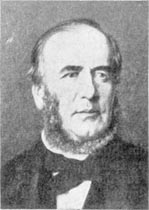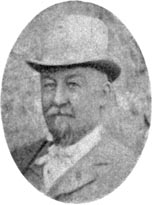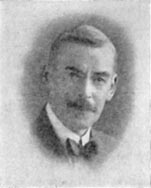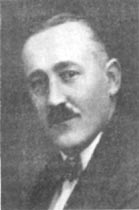Introduction
The London Brighton and South Coast Railway had a number of excellent locomotive engineers during its history. For full details of the locomotive classes refer to D.L. Bradley's classic RCTS trilogy and the earlier histories by F. Burtt and J.N. Maskelyne.
The Early Days
A variety of early engineers held the post of locomotive superintendent, often suffering the board's displeasure at poor reliability or late delivery of engines. These early engineers included (from the London & Brighton days):
- W.C. Harrison (from 14 September 1838 to March 1842).
- Thomas Statham (from September 1840 to end of 1843).
- John Gray (from 27 March 1845 to January 1847).
- Thomas Kirtley (1 February 1847 to November 1847).
The engines in the early years were purchased in from specialist builders (of varying reputations) including: Sharp Roberts; Bury; Jones; Turner & Evans; Fairbairn; Forrester; Rennies; and Hawthorns
John Chester Craven

Locomotive engineer from 15 November 1847 to 31 January 1870.
Born near Leeds on 11th September 1813, he worked on the Manchester & Leeds Railway and then the Eastern Counties Railway before coming to the LB&SCR in 1847. He expanded and improved the locomotive facilities at Brighton so that engines could be constructed there rather than bought in from outside.
He created a plethora of locomotive classes, believing in matching each locomotive to a specific line or route. By the end of the 1860s this policy was no longer suited to the conditions and he resigned in November 1869. He was also an authority on docks and canal locks and continued to advise on these matters into his retirement. He died on 27 June 1887.
For further details see Hamilton Ellis' biography in the Locomotive Magazine and Hamilton Ellis' brief biography.
William Stroudley

Locomotive engineer from 1 February 1870 to 20 December 1889.
He was born in Sandford near Oxford on 6th March 1833 and worked for the Great Western Railway; the Great Northern Railway; Lord Willoughby's colliery railway; the Edinburgh and Glasgow Railway; and then the Highland Railway before joining the LB&SCR in February 1870. He died suddenly in Paris on 20th December 1889 from acute bronchitis.
Stroudley was a great advocate of standardisation. He also introduced the famous Improved Engine Green livery about which there is still heated discussion over a century after his death. He also gave names to most of his locomotives.
For further details see H.J. Campbell Cornwall's biography, Brian Haresnape's book and Hamilton Ellis' brief biography.
Passenger classes
- Class 18 (0-4-2T). Suburban tank engines. Two locomotives taken over from Craven. Introduced in 1871.
- Class B (2-4-0). The Belgravias. Six early passenger locos. Introduced in 1872.
- Class A (0-6-0T) later classes A1/A1X. The Terriers or Rooters. A class of fifty diminutive tank locomotives designed for lightly laid lines. Introduced in 1872. Ten of this class have been preserved. See Locomotives Illustrated No 48; Colin Binnie's book; Tom Middlemass' book.
- Class D (0-4-2T) later classes D1/D1X. Suburban tanks. A total of 125 very useful suburban tank locomotives. Introduced in 1873. See Locomotives Illustrated No.84.
- Class B (2-2-2) later class G. The single Grosvenor. A large experimental single. Introduced in 1874.
- Class F (2-2-2) later class G. The single Abergavenny. A smaller experimental single. Introduced in 1877.
- Class D (0-4-2) later class D2. Mixed traffic Lyons. Fourteen mixed traffic locos. Introduced in 1876.
- Class B (0-4-2). Express passenger, the Richmonds. Six express passenger locos. Introduced in 1878.
- Class G (2-2-2). Express passenger, the Singles. The production class of 24 singles. Introduced in 1880.
- Class B (0-4-2) later class B2. Express passenger Gladstones. The production class of 36 0-4-2 express passenger locos. Introduced in 1884. One of them, No.214 Gladstone herself, is preserved in the 2018-03-08National Railway Museum at York. See Locomotive Profiles No.32 and Locomotives Illustrated No.111.
Goods classes
- Class C (0-6-0) called Jumbos. Twenty well designed standard goods locos. Introduced in 1871. See Locomotives Illustrated No.64.
- Class E (0-6-0T) later classes E1/E1X/E1R. Local goods and passenger and shunting engines. A class of 78 useful small goods tanks. Introduced in 1874. One is preserved on the East Somerset Railway.
- Class C (0-6-0) later class C1, called Big Jumbos. Twelve more slightly larger goods engines. Introduced in 1882. See Locomotives Illustrated No.64.
- Class E special (0-6-0T) later class E2/E1. Goods tank engine Barcelona. Single engine in the class. Introduced in 1884.
- Class F (0-6-2T) later class E3. Local goods and heavy shunting West Brighton. Single engine in the class. Introduced in 1891 after Stroudley's death.
Robert J. Billinton

Locomotive engineer from 13 January 1890 to 7 November 1904.
He was born in Wakefield, Yorkshire on 5th April 1845. He worked for Fairbairn & Sons; Simpson & Co. of Pimlico; Childs of Wakefield; and Munro, Walker & Easton of Sheffield before becoming head draughtsman under Stroudley at Brighton. He then moved to the Midland Railway before returning to Brighton after Stroudley's death. He died on 7th November 1904.
For further details see Klaus Marx's biography.
- Class D3 (0-4-4T) passenger tank locos. See Locomotives Illustrated No.84.
- Class C2 (0-6-0) goods engines. See Locomotives Illustrated No.64.
- Class B2 (4-4-0) express passenger engines. See Locomotives Illustrated No.95.
- Class B3 (4-4-0) express passenger engines. See Locomotives Illustrated No.95.
- Class B4 (4-4-0) express passenger engines. See Locomotives Illustrated No.95.
- Class E3 (0-6-2T) goods tank. See Locomotives Illustrated No.119.
- Class E4 (0-6-2T) secondary and suburban passenger tanks. One of these, No.473 Birch Grove, has been preserved on the 2018-03-09Bluebell Railway. See Locomotives Illustrated No.119.
- Class E5 (0-6-2T) passenger tanks. See Locomotives Illustrated No.119.
- Class E6 (0-6-2T) goods tanks. See Locomotives Illustrated No.119.
Douglas Earle Marsh

Locomotive engineer from 23 November 1904 to 19 July 1911.
He was born in Sall, Norfolk on 4th January 1862. He went to Brighton College followed by University College, London University where he obtained several engineering qualifications. He was then apprenticed to William Dean on the Great Western Railway, rising to Assistant Manager in 1889 at the age of 27. In 1895 he moved to the Great Northern Railway before coming to Brighton in 1904. He resigned in 1911 following a period of ill health. He died in May 1933.
For further details see Charles Fryer's biography.
- Class H1 (4-4-2) express passenger engines. See Locomotives Illustrated No.37.
- Class H2 (4-4-2) express passenger engines. See Locomotives Illustrated No.37.
- Class C3 (0-6-0) goods engines. See Locomotives Illustrated No.64.
- Class I1 (4-4-2T) express passenger engines. See Locomotives Illustrated No.84.
- Class I2 (4-4-2T) express passenger engines. See Locomotives Illustrated No.84.
- Class I3 (4-4-2T) express passenger engines. See Locomotives Illustrated No.84.
- Class I4 (4-4-2T) express passenger engines. See Locomotives Illustrated No.84.
- Class J (4-6-2T) express passenger engines. See Locomotives Illustrated No.37.
Lawson B. Billinton

Locomotive engineer from 1 January 1912 to 31 December 1922.
Born in 1882, Lawson Billinton had worked his way up the LBSCR company starting under his father Robert Billinton, progressing through the drawing office before becoming an inspector of materials, then firstly Assistant, then District Locomotive Superintendent. He died in November 1954.
For further details see Klaus Marx's biography.
- Class E2 (0-6-0T) goods engines.
- Class L (4-6-4T) express passenger engines. See Charles Fryer's monograph and Locomotives Illustrated No.37
- Class K (2-6-0) heavy goods engines. See Locomotives Illustrated No.37 and Locomotives Illustrated No.105.
- Class B4x (4-4-0) rebuilt passenger engines. See Locomotives Illustrated No.95.